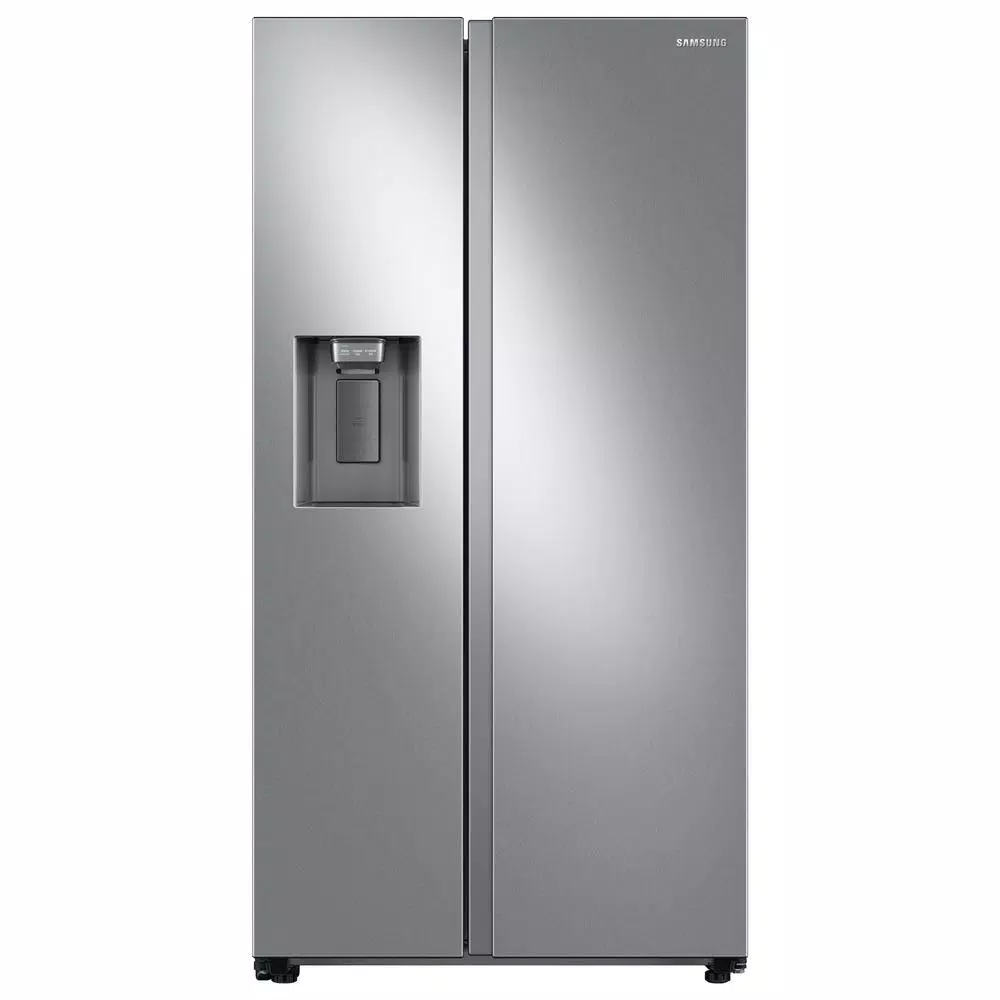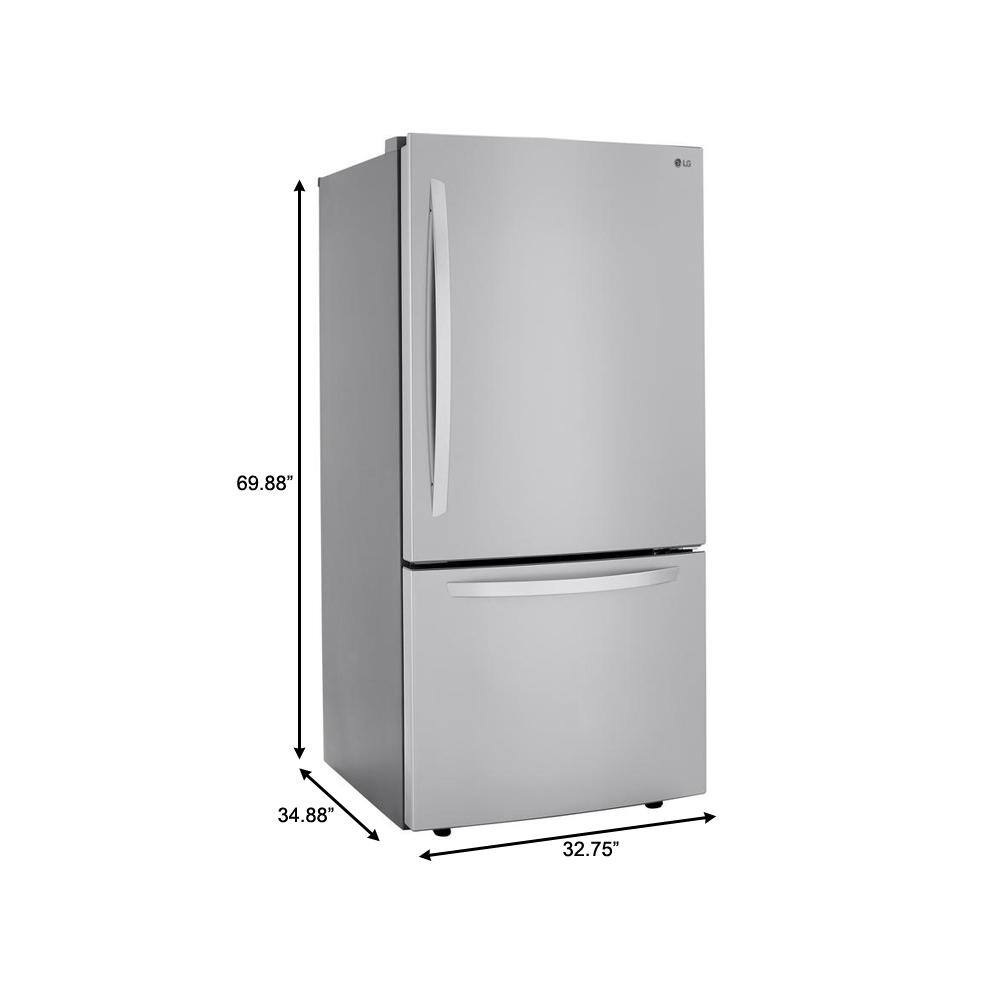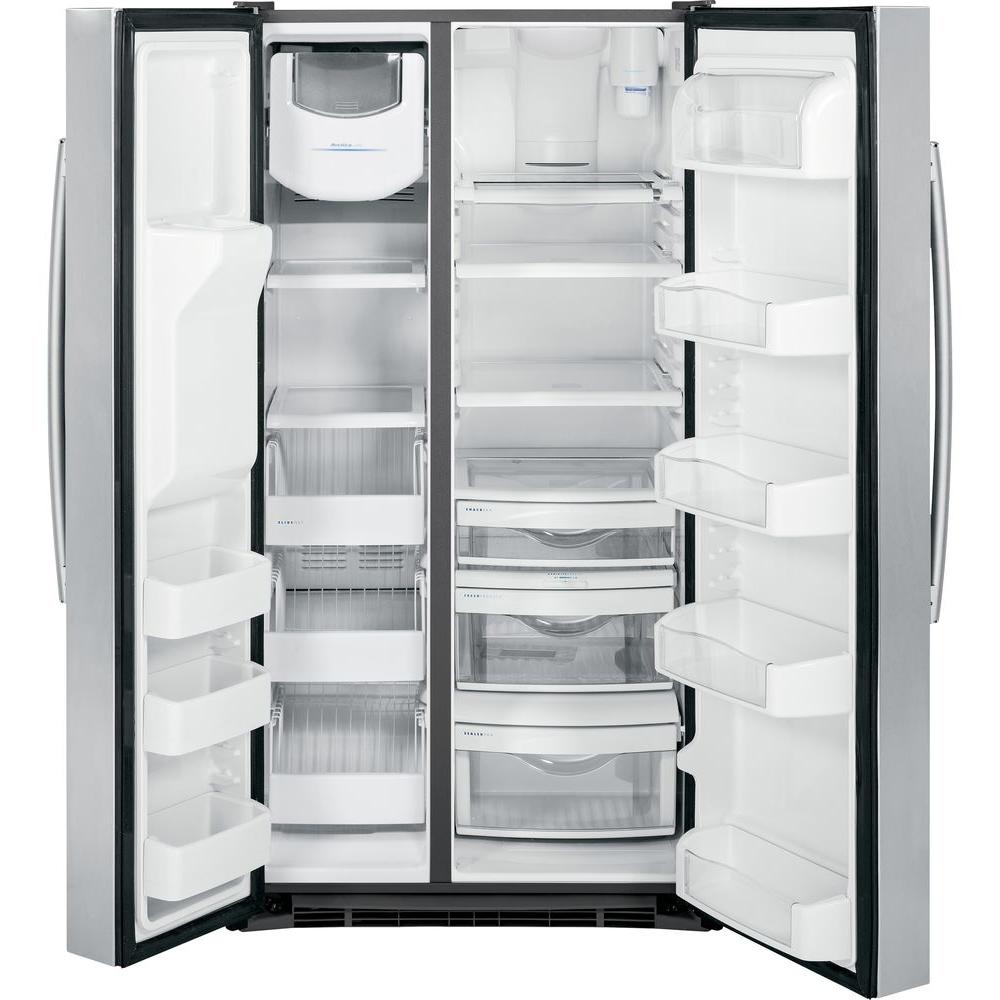LG 26.9 cu. ft. 4-Door French Door Refrigerator with Internal Water Dispenser in PrintProof Stainless Steel
Ultra-large capacity refrigerator stores more food. Access fresh filtered water with NSF certified water dispenser. Features two crisper drawers and fingerprint resistant finish.
If you’ve ever wished you had more space to get more organized, your wish has been granted. With 27 cu. ft., you get that extra space. Thanks to the ultimate organization of the double freezer drawers, you can forget frozen-food avalanches-you’ve got a place for everything from popsicle to a family-size turkey. You also get extras like internal water dispenser for a clean exterior design and Door Cooling+ technology, designed to help keep all that extra food fresher, longer.
- Stock-up and store everything you need with a cavernous 27 cu. ft. of space, this LG French Door refrigerator gives you ample space for all of your family’s favorite foods and keeps them conveniently organized and within reach
- With 2 separate freezer drawers, you have easy, organized access to the things you need often and ample, lower space for the things you don’t
- Now you can have all of the things you love about stainless, without the need for special cleaners or constant attention. LG’s PrintProof fingerprint and smudge resistant finish easily wipes clean with a soft, dry cloth for a distinctive kitchen that handles real-life in style
- Your food isn’t the only thing that stays fresh. Only LG offers a 1-layer Fresh Air Filter with dedicated fan that pushes cleaner, fresher air into the fridge
- Easily access fresh filtered water with an internal water dispenser. You can conveniently fill your cup, pitcher or even a small sauce pot with clean cold water
- LG’s new pharmaceutical water filter, NSF certified to reduce more contaminants than our previous filters, for freshness you can taste
- Located in the top of the fresh food section, the Door Cooling + vent extends the reach of LG’s Smart Cooling system. Blasts of cool air reach all areas of the refrigerator, including the door to help maintain consistent temperatures from top to bottom. It helps keep all foods fresh and flavorful and keeps produce fresh up to 2X longer
- Smart Cooling system is designed to maintain superior conditions within the refrigerator, the Linear Compressor reacts quickly to temperature fluctuations and helps keep your food fresher, longer, Meanwhile, strategically-placed vents in every section help to surround your food with cool air no matter where you put it
- Contoured doors, hidden hinges, and a host of great interior features give your refrigerator a look that’s as sophisticated as it is functional, and it’s beauty isn’t just the outside. With every feature thoughtfully designed, this appliance helps you create the sophisticated, distinctive kitchen you want and deserve
- 2 crisper drawers gives you easy access to your fruits, vegetables and beverages, this refrigerator also features a full-width Glide N’ Serve pantry drawer, making the it easy to find some space for all that food you want to keep fresh
- SmartDiagnosis helps the service center diagnose problems over the phone, helping you troubleshoot quickly
- When you buy a refrigerator, you don’t want to worry that it won’t last, Because the Linear Compressor motor uses fewer moving parts and operates more efficiently, LG confidently backs the motor with a 10-year limited warranty
- ENERGY STAR qualified LG refrigerator exceeds federal energy standards to positively impact your energy bill, your energy consumption, and most importantly, the environment
Additional information
| Depth (Excluding Handles) | 31.75 |
|---|---|
| Depth (Including Handles) | 34.25 |
| Depth (Less Door) | 27.88 |
| Depth With Door Open 90 Degrees (In) | 46.25 |
| Height to Top of Door Hinge (in.) | 69.75 |
| Height to Top of Refrigerator (in.) | 68.38 |
| Product Depth x Height x Width (in.) | 34.25 x 69.75 x 35.75 |
| Refrigerator Width (In.) | 35.75 |
| Certifications and Listings | CSA Listed,Energy Star |
| Manufacturer Warranty | 1 Year Parts & Labor, 5 Years Sealed System (Parts & Labor), 5 Compressor (Parts & Labor), 6-10 Years Linear Compressor (Parts Only) |






by Daniel
I think this is a quality refrigerator. It has a clean look and lots of room for groceries. I use the internal water dispenser way more than I thought I would, and it is out of the way so door shelfs can be stocked full. And the two freezer drawers are easier to use than the single door and sliding shelves
by Reggie
Love the LG Refrigator. Just what we needed.
by Larry
Great layout, good lighting, and easy to clean. I just wished the shelves were more adjustable and that a scoop for the ice maker had been included.
by Peter
The delivery of our new French door fridge with drawers for freezer took some time due to weather. But worth the wait. It runs silent. Can not hear it running. Ice maker is the only noise it makes when dumping ice into pan. Having small grandchildren the water dispenser and ice are enclosed within the unit not on the front of doors. This is a plus keeping little ones from making a mess in the floor from pushing the water and ice dispencer. Well worth every penny. My wife is wild about it.
by Bill
Nice I need to get the paperwork to record the warranty.
by Louis
Great quality and value. Referred many of my friends to the product.
by Vivian
Good price super spacious inside works great!
by Jake
This refrigerator has plenty of space. The water dispenser is genius. The best part is the double drawers for the freezer. That is perfect. If it were one, you have to go moving everything and digging around for items. With a double, there is no need. A double freezer door should be a standard. Only con is the print proof coating is bogus. I have had those before, no manufacture can truly make it a reality. Not a big deal though.
by Pudda
I love the size and quality of this refrigerator. I’m satisfied with my purchase.